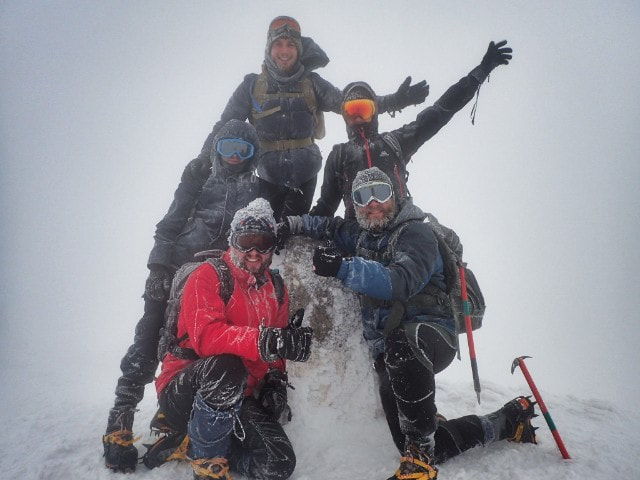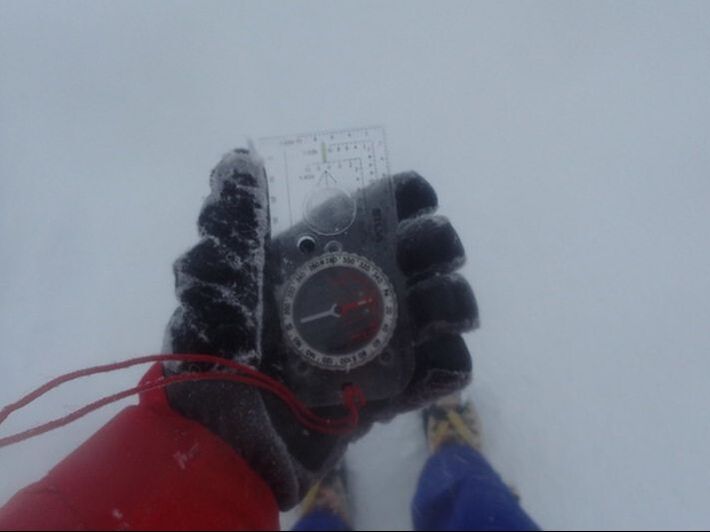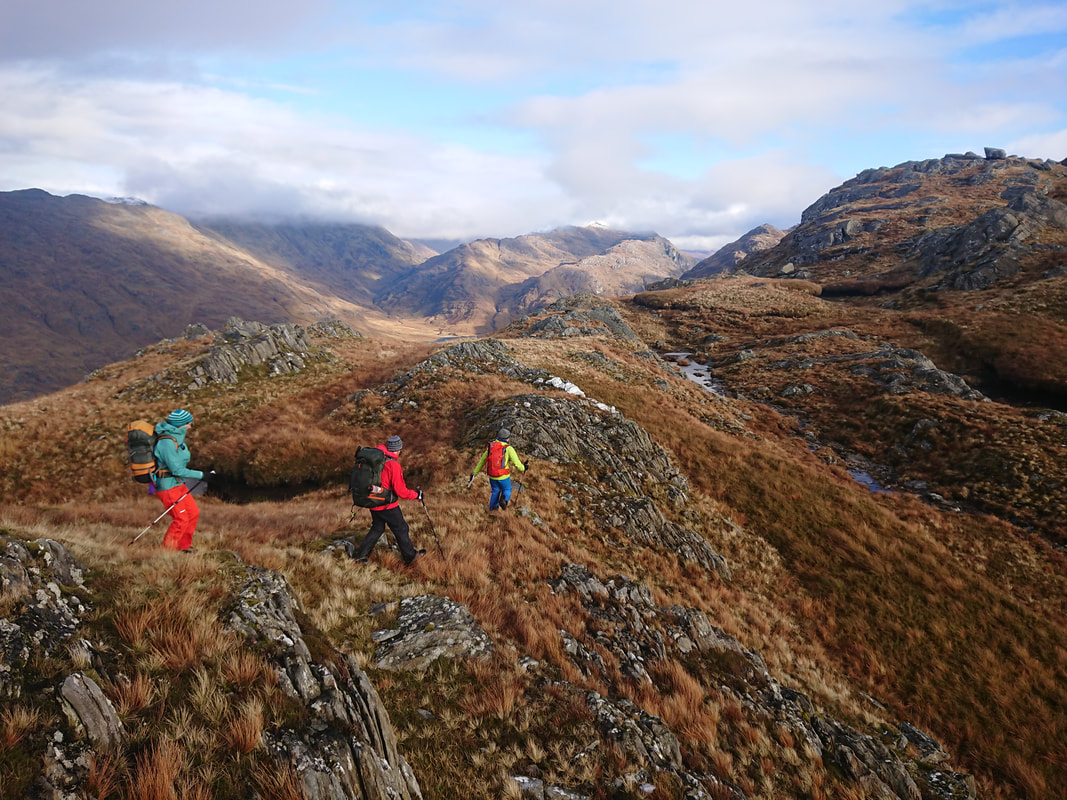|
Climbing Ben Nevis during the winter months can be incredibly challenging but if you get it right, your experience on the UK's highest mountain can also be very rewarding. Having the right kit with you, and knowing how to use it, could be the difference between having a safe and enjoyable experience and going home cold, wet and disappointed. Give yourself the best chance of success and make sure you go prepared for your winter ascent of Ben Nevis.
What clothes should I wear to climb Ben Nevis? The key to staying warm in the mountains is layers, but you need to have the right type of layers. One of the most important things to remember when deciding what layers to wear is NO COTTON. While walking up Ben Nevis you will sweat and when cotton gets wet it is very cold. It also takes a really long time to dry so you will spend the rest of your day damp and cold. Synthetic or wool are the best materials to go for, and for your base layers we would recommend wool. It is much warmer when it gets a bit damp with sweat and it also dries fairly quickly. Next, go for a fleece, and then maybe a synthetic insulated jacket. Last of all will be your waterproof jacket, ideally with a nice big hood and wide cuffs so you can get your gloves tucked up inside your sleeves. For your bottom half, woollen leggings and waterproof trousers are probably all you need. Wear your waterproof trousers from the start so you don't have to faff around trying to get them on over your big winter boots and crampons. You will probably also start out the day wearing a woolly hat and thin gloves, which will get swapped for big, thick gloves when you get a bit higher. Everyone is different so it may take a few attempts to work out which layers and how many work for you. What boots do I need to climb Ben Nevis in winter? Getting the correct footwear for your winter ascent of Ben Nevis is absolutely vital. As we discuss in the next section, you should expect to need crampons, so you need boots that can have crampons fitted to them. Winter boots are rated B1, B2 or B3 and for Ben Nevis we recommend either a B2 or B3 boot. B2 boots are good all-rounders and B3's are more designed for climbing, but at least you'll know that they will definitely be up to the task. Both B2 and B3 boots have a stiff mid-sole so they can be used to effectively kick steps into short sections of harder snow, and they won't bend inside a crampon causing it too fall off. Summer boots tend to be quite bendy and flexible which means that crampons will just fall off, making them completely useless in the winter. Winter boots are also much thicker and warmer than summer boots so you will certainly appreciate them when you are standing on the summit in -10 degrees Celsius. Compared to summer boots, winter boots feel quite stiff and uncomfortable when you first use them but you will get used to them. If you're buying your first pair go to a good outdoor shop and try on as many different boots as you can. Then break them in with some shorter walks before heading for Ben Nevis. Do I need an ice axe and crampons for Ben Nevis? If you are climbing Ben Nevis between November and early May then you should plan to take crampons and a single mountaineering ice axe. Early in the winter season the snow cover will be thin and it will come and go, but it doesn't take long for the snow to build up and for crampons and an axe to become essential. You don't know if the snow will be hard and icy until you are up there, by which point it is too late to go back and get them! Make sure your crampons are fitted to your winter boots before you set off, and it is also good to practise putting them on while wearing thick gloves. They need to be real crampons rather than microspikes, which are next to useless on hard, icy snow. Just like boots, crampons also have a rating system - C1, C2 and C3 - so ensure you have the right crampons for your boots. B2 boots can take C1 or C2 crampons and B3 boots can take any kind of crampons.
What other equipment should I carry?
So you have your clothes, boots, crampons and ice axe sorted, but what else do you need?
What food should I take when I climb Ben Nevis? Don't be shy with the food you take because the last thing you want is to run out. Take high calorie food that has a good balance of carbohydrates, fat and protein and is easy to eat when wearing gloves - peanut butter, cheese or sardine sandwiches, flapjacks, nuts, chocolate, sweets etc. Take tasty food that you know you like and will eat, and lots of it. It is really easy to get dehydrated in the winter so take hot juice. You will be much more likely to drink this than cold water, and will make you feel a whole lot better when the weather is wild.
0 Comments
Your comment will be posted after it is approved.
Leave a Reply. |
AuthorMike Pescod Self reliance is a fundamental principle of mountaineering. By participating we accept this and take responsibility for the decisions we make. These blog posts and conditions reports are intended to help you make good decisions. They do not remove the need for you to make your own judgements when out in the hills.
Archives
March 2024
|



 RSS Feed
RSS Feed
